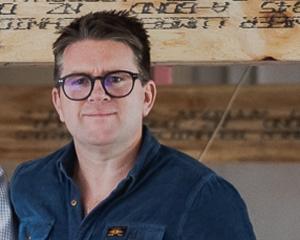
The 9sq m shelter, designed by adventurer Erik Bradshaw, could even be the prototype for accommodation huts in the Antarctic.
Mr Bradshaw and a group of friends built it in his backyard, then had it flown to a site on private property in July.
It offered many advantages over conventional hut design, he said.
It could be moved by helicopter with as little as two hours’ notice, and although its walls were flexible like a tent’s, it was "very strong" and capable of withstanding winds greater than 200kmh.

Called a "Turk" because it was neither hut, yurt or tank, it had been used by backcountry skiers over the winter and would be a refuge for trampers over the coming summer.
Although it had been made for day and emergency use, he wanted to develop the design for use as accommodation.
That has attracted the interest of Glenorchy-based Antarctic veteran Alastair Fastier.
Mr Fastier, who is managing the restoration of a historic hut at Cape Adare in the frozen continent, said Mr Bradshaw had solved a lot of technical and design issues.
"I’m considering using his design as temporary bases in the Antarctic.
"This will take it to the next level of minus 30 degree temperatures and 200kmh-plus winds."
Mr Bradshaw said using a water tank as a starting point immediately solved many issues faced by alpine huts.
Because the structure was watertight, it could not be degraded by moisture, even in high winds.
"Stories from the Antarctic are the most comical, where people open the door of a hut that has been unoccupied for a year, and find it full to the ceiling with snow.
"The reason is that tiny ice crystals defy the rules of gravity and get through the most microscopic opening."
After learning the Australian Antarctic Division had successfully used plastic tanks as huts on subantarctic islands, he had contacted their main designer.
"Their designs used smaller tanks, and didn’t have opening windows, lintels or guttering.
"I believe we have taken a substantial evolutionary step from their design and have made something much more habitable."
His main motivation was to get more people out into the backcountry in winter.
The first person to ski traverse the length of the Southern Alps, in 2011, Mr Bradshaw said the mountains were "amazingly empty and staggeringly beautiful" in winter.
"Few people have the fortitude and skills to stay in a lightweight tent at winter temperatures, so my hope is, with cheap, pleasant and accessible accommodation, more people will venture into the snowy wonderland."
He was donating the design and intellectual property to a Federated Mountain Clubs trust, and hoped backcountry enthusiasts would take up the opportunity to build their own.
"I’m expecting there’s going to be about 10 of these around the place by this time next year."
The first Turk cost $9500 for the materials and took him and a small team about 200 hours to build.











